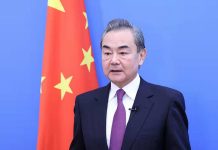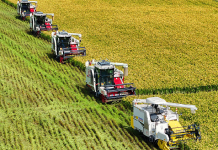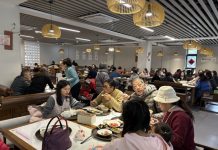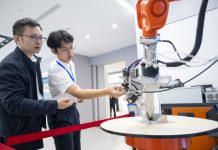BEIJING: When guests from around the world arrived at the Shanghai Pudong International Airport recently to participate in the Third China International Import Expo (CIIE), few could have imagined that this bustling aviation hub on the bank of the Yangtze River used to be a tidal flat till the late 1990s.
Shanghai’s Pudong and Puxi areas, though separated only by the Huangpu River, used to be dissimilar like chalk and cheese. Puxi was prosperous while Pudong was all villages and farmland before the 1990s. There was an old saying in Shanghai: It’s better to have a bed in Puxi than a house in Pudong.
In the past three decades, Pudong has developed into one of the country’s most prosperous areas. On November 12, a grand gathering was held in Shanghai to celebrate the 30th anniversary of the area’s development and opening up. At the gathering, President Xi Jinping called on Pudong to play new roles and accomplish new missions in China’s new march to build a great modern socialist country. In particular, he urged for major innovations in science and technology.
The Central Government made the decision to develop and open up Pudong in April 1990.
It was not a sudden decision. In the 1980s, the Communist Party of China (CPC) and the government had the idea of developing Pudong to address the problems hindering Shanghai’s development—traffic congestion, housing scarcity and lack of development space.
It was a strategic decision. Shen Kaiyan, Director of the Institute of Economics at the Shanghai Academy of Social Sciences, told Shanghai-based Xinmin Weekly, “It was a crucial step for aligning China with the rest of the world. The move indicated China’s determination to go ahead with reform and opening up.”
In 1990, Pudong New Area was established and from there, a modern new economic center emerged from farmland. Today, Pudong, which accounts for only about 0.01 percent of China’s territory, produces 1 percent of the country’s GDP and 6 percent of the national import and export value.
Since 1994, Yao Jianliang has been taking panoramic photographs of Lujiazui, a financial hub in Pudong, from a city landmark, the 468-meter Oriental Pearl Radio and TV Tower that is the fourth highest tower in Asia. It became an annual task for him to document the changing face of Lujiazui with his bird’s-eye-view images. When the China Art Museum in Pudong opened a month-long exhibition, Wind From the East, on October 30 to shine a light on three decades of change, Yao’s photographs were part of the collection.
In the first photo, Lujiazui was full of one-story houses. Following the launch of the policy to open up Pudong, the government decided to build a new trade and finance center in Lujiazui. Yao said he used to wonder how such a backward place could be turned into a financial hub.
Today, the Lujiazui Finance and Trade Zone is dominated by skyscrapers. Though it has an area of only about 31.78 square km, it houses more than 6,000 financial institutions and over 300,000 financial professionals. Of its 285 commercial buildings, the occupants of 102 buildings pay taxes of over 100 million yuan ($15 million), 30 over 1 billion yuan ($152 million) and four over 5 billion yuan ($758 million).
In the 1990s, the Shanghai Stock Exchange (SSE) and the Shanghai Futures Exchange were established in Pudong and a national-level financial market took shape in Shanghai.
– The Daily Mail-Beijing Review News exchange item






